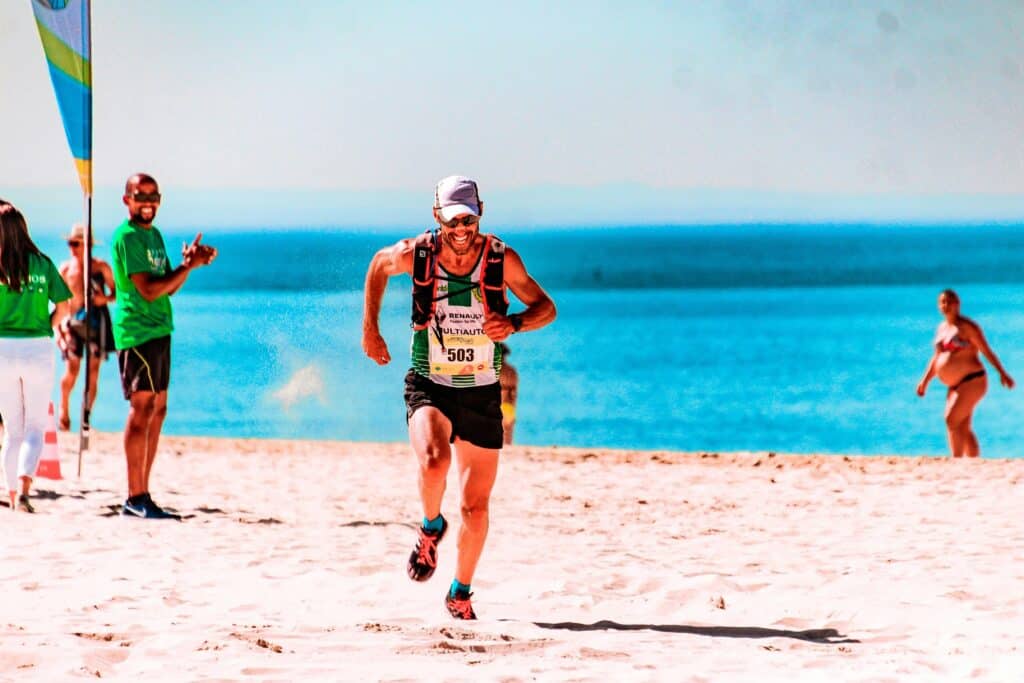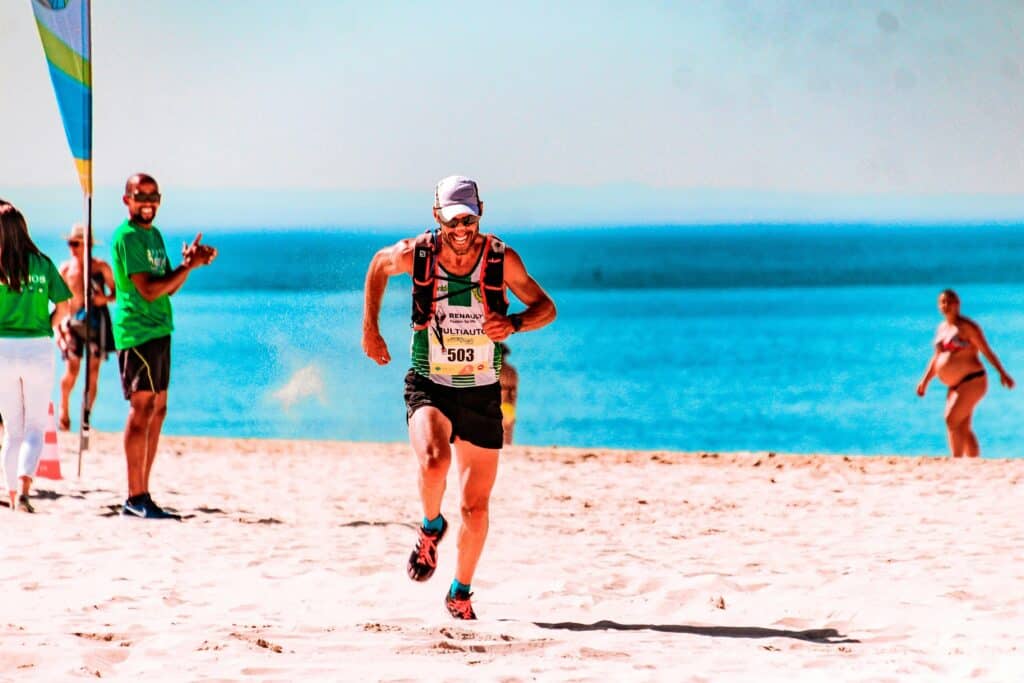After watching runners under-perform on race day, experienced running coach and author Matt Fitzgerald decided he could sum up what he thought was missing from training and race days in one word: pacing. While runners often use pacing to conserve energy or maintain a certain speed, Fitzgerald contends that pacing is about reaching your full potential, rather than restricting it.
In response to this “pacing crisis,” Fitzgerald wrote How to Run the Perfect Race: Better Racing Through Better Pacing, published May 2024, in which he explores pacing as a tool for reaching your absolute limit on race day and beyond. We sat down with Fitzgerald to talk about his newly-released book, how to run the perfect race, and the role that pacing plays in running performance.

What Is the Perfect Race?
As you may have guessed from the title, Fitzgaerald’s book is for any runner “who wants to know what it feels like to run the perfect race,” he tells Half Marathon Guide. The ever-elusive perfect race is not necessarily one in which you win, but a race where you can look back and say you wouldn’t have done anything differently, according to Fitzgerald. That goes for everything from a fun run to the hardest marathons in the U.S.
Pushing your limits doesn’t just mean a sprint to the finish line. It also means achieving your absolute limit at every moment of the race.
Fitzgerald uses a metaphor to illustrate his point: A bicyclist is offered one million dollars at the end of each mile of a race to speed up at which point they do so. “That just goes to show you’re not actually touching any physical limits, you’re constrained by them,” he says. And the key to finding your absolute limit is hitting a good running pace.
The Most Common Pacing Mistakes
Fitzgerald says that he sees a lot of pacing issues start at the beginning of a race, when the runner starts too fast or too slow.
He acknowledges that pacing is difficult and can only be learned through years of experience – but he adds that one huge issue is most runners are over reliant on their fitness trackers to track their progress. In a world of smartwatches and heart-monitoring rings, these tools are not inherently good or bad. “But your sports watch doesn’t know your perceptual limit,” Fitzgerald adds.
Pacing requires an internal awareness and fitness wearables can easily become a crutch, he says.

How to Train For the Perfect Race
When it comes to learning pacing, Fitzgerald notes that there’s “no substitute for experience.” It’s a hard skill to learn and, with it, there’s the potential risk that running can become less fun — but that doesn’t have to be the case. “Working on your pacing can and should be a fun way to kind of gamify your training,” Fitzgerald says.
Pacing is also a way to level the playing field and shift value from winning to running. As a challenging but essential skill of running, pacing democratizes running in a way, according to Fitzgerald. “Only one runner can be the fastest, but any runner has the potential to reach their full potential,” he says.
Want to get better at pacing? Check out:





